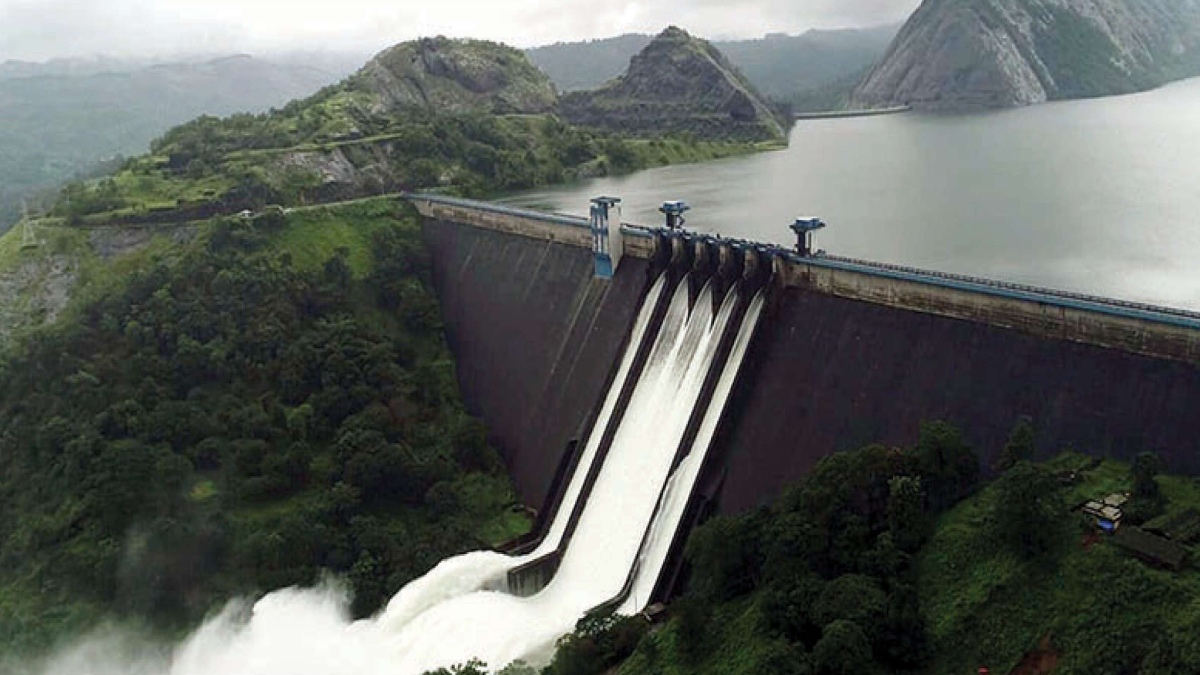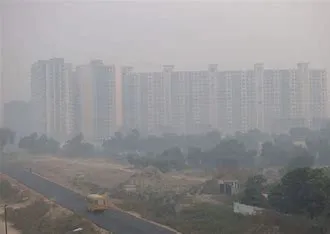As principal draftsman of the Standing Committee of Parliament on Water Resources on the Dam Safety Bill, 2010, it’s a matter of immense satisfaction that the dam safety legislation has been eventually enacted. The Dam Safety Bill, 2021 was passed by the Rajya Sabha after extensive debate on 2nd December 2021. The Lok Sabha had passed it on 2nd August 2019. Many opposition members in both the Houses demanded that the Bill be referred to the Standing Committee but the Government rejected the demand. The stand of the Jal Shakti Minister, Gajendra Singh Shekhawat, was that the Bill of 2021 was based on the report of the Standing Committee on the Bill of 2010, which formed ‘the backbone’ of the new Bill. The Dam Safety Bill, 2019 piloted by Gajendra Singh Shekhawat during the very first session of the current Lok Sabha incorporated majority of the recommendations of the Committee contained in their 7th Report (15th LS). The Dam Safety Bill, first introduced in the 15th Lok Sabha on 30th August 2010, was referred to the Committee for examination and report. The Committee undertook study visits to some Dam sites, invited public memoranda, heard domain experts, examined official witnesses, stakeholders and finally presented a comprehensive report to Parliament in August 2011.
Dams are critical infrastructure constructed with large investment for multi-purpose uses such as irrigation, power generation, flood moderation and supply of water for drinking and industrial purposes. An unsafe dam constitutes a hazard to human life, ecology and public and private assets including crops, houses, buildings, canals and roads. Therefore, the safety of dams is a matter of great concern to the general public and becomes a national responsibility to take necessary steps to ensure the safety of dams. The Committee found many serious flaws in the Bill. Most glaring of it all, the Bill lacked penal provision, deficient definitional clauses, omission of upstream devastation caused by a Dam, structure of Dam Safety Organisation, the damage likely to be caused by the Dams including landslide or moraine located outside the national territory, etc. All these recommendations and observations have been incorporated in the new legislation and the Minister assured the Parliament that many of the observations of the members would form part of the Rules, exercising the power of delegated legislation under the Dam Safety Act.
It would be worthwhile to recall briefly the history of this much-awaited legislation. The Government of India, keeping in view the importance of the safety of dams and want of a legislative framework regulating dam safety, constituted a Committee in the year 1982 under the Chairmanship of Chairman, Central Water Commission to review the existing practices and to evolve unified procedure for the safety of dams in India. The Committee in its report dated the 10th July 1986 recommended for unified dam safety procedure for all dams in India underlining the necessity of legislation on dam safety. Initial efforts for dam safety legislation were directed towards the enactment of appropriate legislation by some State Governments. The State of Bihar enacted the Dam Safety Act, 2006. Kerala amended its Irrigation Act incorporating a dam safety provision. However, some of the States favoured a uniform dam safety central legislation. The undivided State of Andhra Pradesh and West Bengal adopted a resolution in their Assemblies for an Act of Parliament. Accordingly, the Dam Safety Bill, 2010 was introduced in Lok Sabha on the 30th of August, 2010. The Bill was referred to the parliamentary Standing Committee on Water Resources for examination and report. The Committee submitted its Report on the Dam Safety Bill, 2010, recommending wholesale amendments to the Bill. The Ministry of Water Resources, rechristened Water Power, withdrew the Bill and introduced a new Dam Safety Bill during the 16th Lok Sabha. But with the dissolution of the 16th Lok Sabha, the Dam Safety Bill, 2018 lapsed. The Government introduced the Dam Safety Bill, 2019 in the very first session of the 17th Lok Sabha which has since been passed by the Rajya Sabha also.
The Dam Safety Act, 2021, inter alia, provides for (a) constitution of the National Committee on Dam Safety to discharge functions to prevent dam failure related disasters and to maintain standards of dam safety and to evolve dam safety policies and recommend necessary regulations as may be required for the purpose; (b) establishment of the National Dam Safety Authority as a regulatory body to implement the policy, guidelines and standards for proper surveillance, inspection and maintenance of specified dams and address unresolved points of issues between the State Dam Safety Organisation of two States, or between the State Dam Safety Organisation of a State and the owner of a dam in that State, and in certain cases, such as dams extending in two or more States or dams of one State falling under the territory of another State; (c) constitution of the State Committee on Dam Safety by the State Governments to ensure proper surveillance, inspection, operation and maintenance of all specified dams in that State and ensure their safe functioning; and (d) establishment of the State Dam Safety Organisation in States having specified dams which will be manned by officers with adequate experience in the field of safety of dams. The Act makes it mandatory for every owner of a specified dam to establish operational and maintenance set up to ensure the continued safety of such dams, to earmark sufficient and specific funds for maintenance and repairs of the dams, for undertaking pre-monsoon and post-monsoon inspections and special inspections during and after floods, earthquakes, etc., to carry out risk assessment studies at such intervals as specified by the National Committee on Dam Safety. The law casts an obligation upon the concerned State Dam Safety Organisation to keep perpetual surveillance, carry out inspections and monitor the operation and maintenance of specified dams under its jurisdiction to ensure their safety; and to classify each dam under their jurisdiction as per the vulnerability and hazard classification following the regulations. The National Dam Safety Authority is required to table its Annual Report in Parliament and the State Dam Safety Organisation to submit its Annual Reports on the safety status of dams to the concerned State Legislative and State Disaster Management Authority.
The Bill witnessed lively debates in both the Houses. Some Members questioned the legislative competence of the Union Government to enact a law on ‘water’ which is a State subject under the 7th Schedule to the Constitution and also sought clarification for not incorporating a part of the Preamble of the 2010 Bill in the Bill of 2019 which read: “And whereas Parliament has no power to make laws for the States concerning any of the matters aforesaid except as provided in Articles 249 and 250 of the Constitution”. Also the reference to Resolutions passed by the Legislative Assemblies of (undivided) Andhra Pradesh and West Bengal that Dam Safety should be regulated by law made by Parliament. The Minister referred to the recommendation of the Standing Committee on Water Resources to modify the Preamble suitably, dam safety being an inter-state matter. This view was fortified by some lawyer members invoking the doctrine of pith and substance and justified the legislative competence of Parliament to enact the legislation in accord with the recommendation of the Water Resources Committee of Parliament. The Minister allayed the fear of erosion of legislative powers of the States by stating that the legislation purely deals with dam safety and matters allied and incidental without impinging upon the ownership of Dams, the water impounded, its use, or the hydropower generated by them. He also made it categorically clear that there was no question of the Union Government taking over the control, maintenance and ownership of Dams. Anyone refusing to comply with the directions issued under the Dam Safety Act will be punishable with imprisonment of up to one year, or a fine, or both. If the offence leads to the loss of lives, the imprisonment will raise to two years. Every dam owner has to provide a dam safety unit to inspect the dam before and after the monsoon session, during and after every earthquake, flood, or any other calamity or sign of distress.
India has currently 5,745 large dams, of which 393 are over 100 years old and more than 25 percent of dams are 50 years old. Aging dams and dam failures can cause colossal damage to life and property not only downstream but also upstream if sluice gates are not opened timely to prevent water impounding upstream and consequential damage. A dam may be constructed in a particular location of a State but it has consequences and safety implications for the upstream and downstream States, apart from environmental hazards. In exercise of its legislative power under Article 246 read with Entry 56 and Entry 97 of the Constitution and the dire long felt need for dam safety, Parliament has filled a long-felt void by enacting the Dam Safety legislation.
The writer is the ex-Additional Secretary, Lok Sabha, and serviced the Standing Committee on Water Resources under the Chairmanship of Dip Gogoi, 15th Lok Sabha which examined the Dam Safety Bill, 2010. Views expressed are the writer’s personal.























